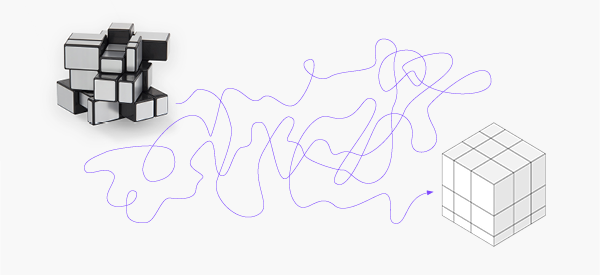or how to solve the Mirror Cube
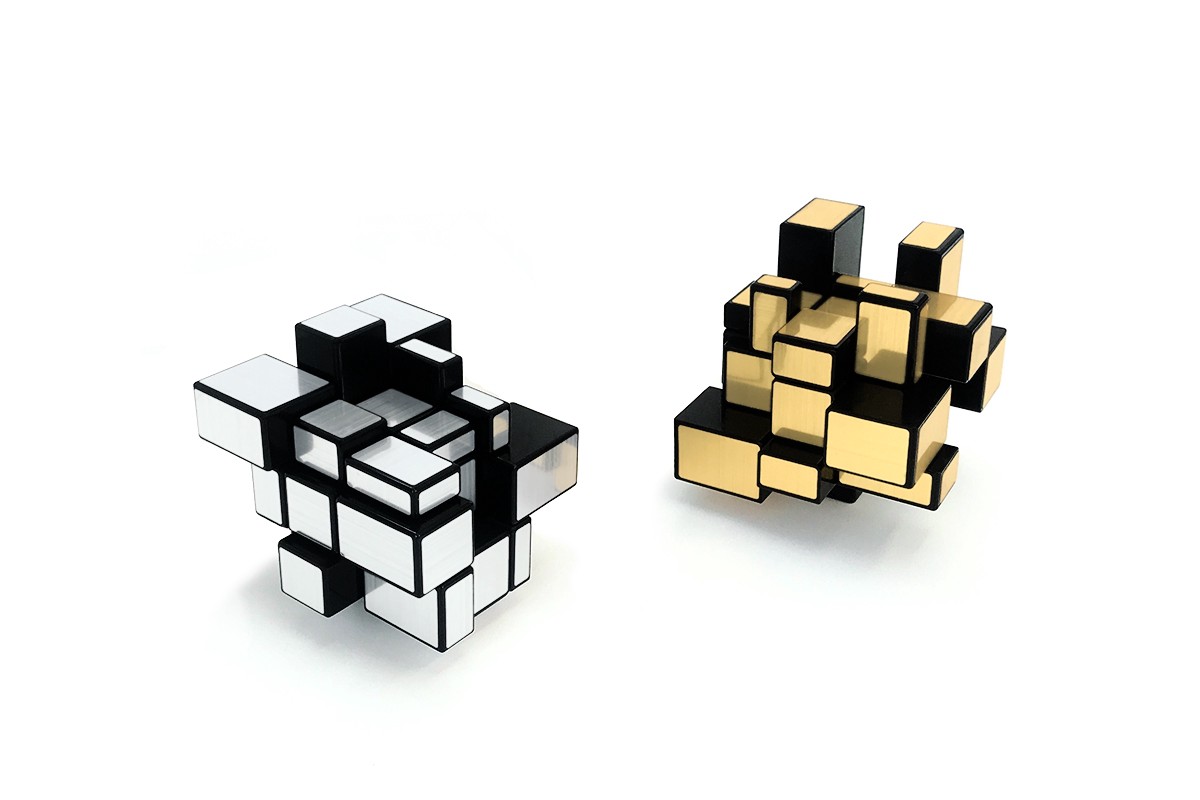 via Muk
via Muk
Mirror Cube is a very special Rubik?s Cube for very special people.
Apart from being a freaking cool paper weight, the Mirror Cube (also known as the Bump Cube or the Mirror Blocks) is a difficult yet rewarding 3×3 puzzle. As a highly addictive toy, of course it?s a variant of the infamous Rubik?s Cube.
Back when I was a dummy, I knew nothing about the Mirror Cube, or the Rubik?s for that matter, until I put my hands on one once upon a time? And the rest is now history. I?ve embarrassed myself many times in public since then, struggling with the Cube. I was clueless of how to solve it. (Also, in an accidental social experiment, I?ve found out that people, regardless of demographics, are instinctively drawn to shiny objects. So this toy is very very attention-grabbing.) But those days are in the past now. I?ve done the leg work, practiced a lot and now know how to solve the Mirror Cube. And I?m here to teach you.
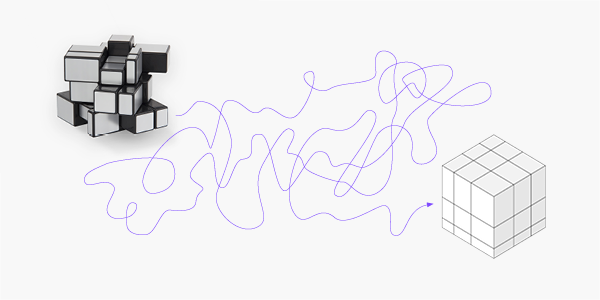 via Muk
via Muk
I have to first mention that you need a basic knowledge of the Rubik?s Cube to follow this simple guide. With that I mean an understanding of the terminology, which is applied to any 3×3 puzzles. And of course, once get comfortable with the Mirror Cube, you can easily make your way into any other 3×3, including the Rubik?s Cube and the same algorithms would apply.
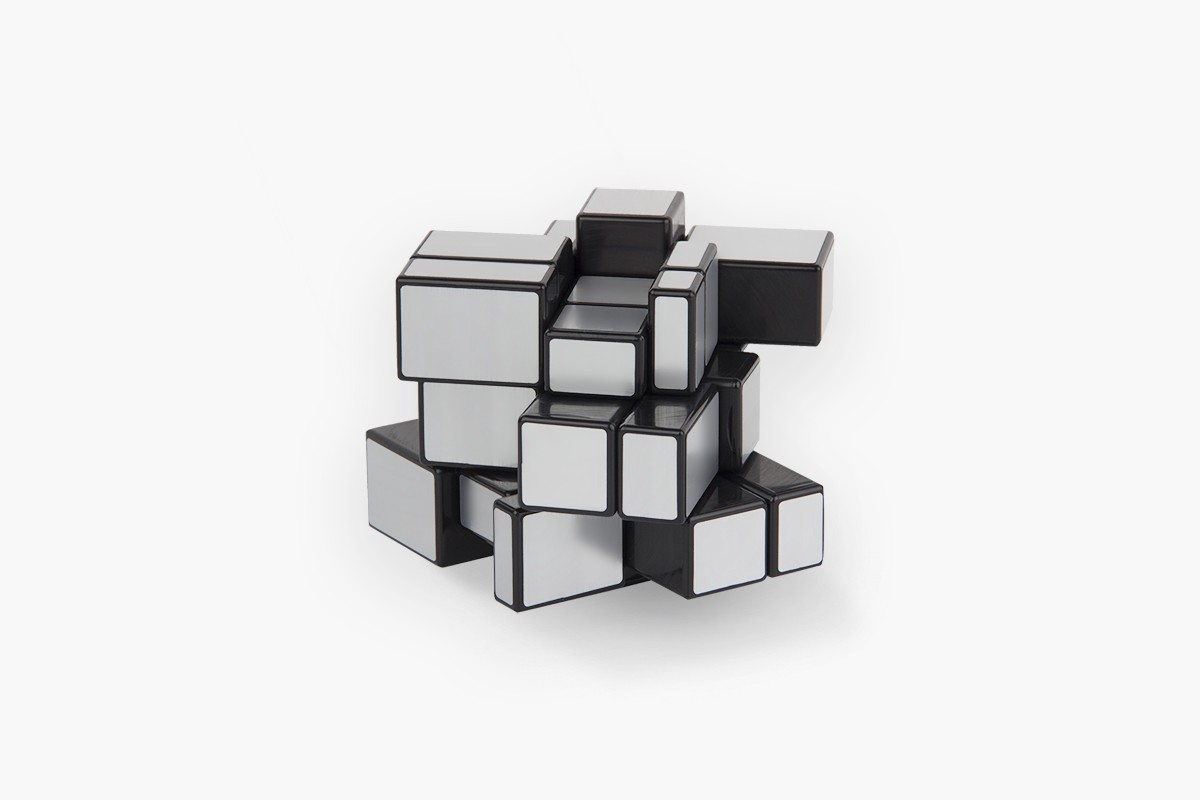 via Muk
via Muk
So here?s how:
- Take a look at each side of your scrambled Cube. Look at the blocks, the dimensions, analyse them and estimate which piece should go where before you do anything.
- Try to choose a face as the equivalent of the white side of the Rubik?s cube. This is the side you?ll try to solve first. I suggest that you pick the tallest side by finding the tallest centrepiece. This is a good trick because apparently the thickest slice is the easiest to grab, which will come handy in later stages. To be honest, I don?t quite understand why this is so essential though, but for some reason it works! So you might as well use it.
- Now start solving the cube. Not so easy, right? Of course, to do so, you need a 3×3 algorithm, and any one would do. There are multiple techniques out there, but I personally use, and suggest you to use too, the beginner?s method.
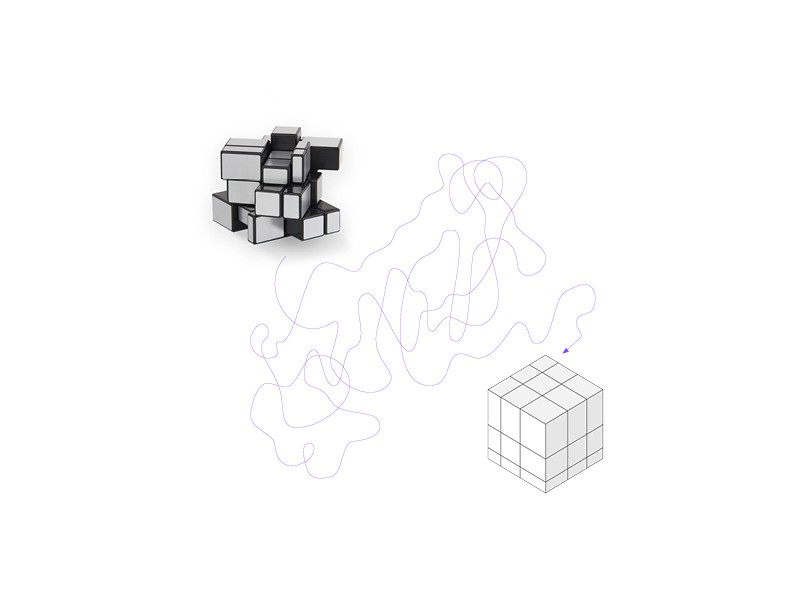 via Muk
via Muk
The beginner?s method roughly looks like this:
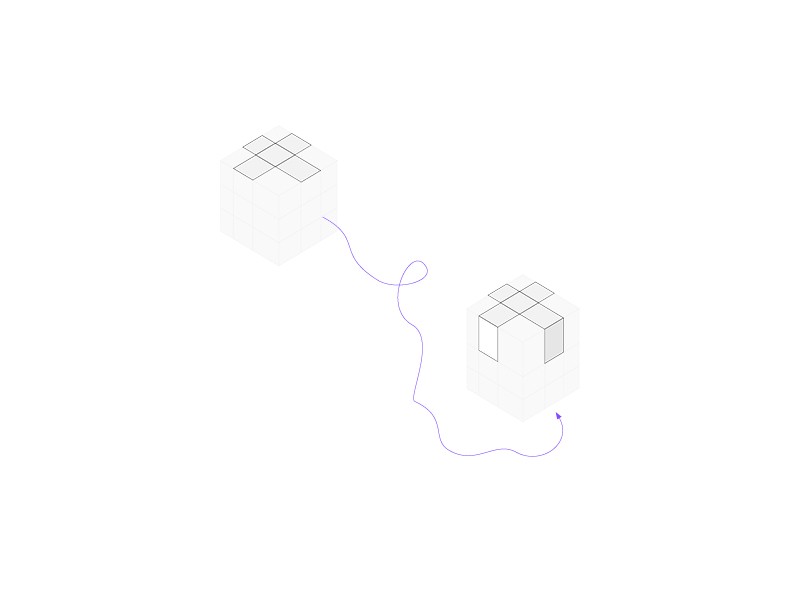 via Muk
via Muk
- Start by solving the central cross of your ?white side?. You have to remember that the centrepieces are the ones that are fixed, and you?ll want to match the legs of the cross to those.
2. Then go back to your ?white side? and solve only this side. You shouldn?t need any algorithms for these two steps as they should come intuitively to you.
3. Now, check back if the centrepieces on the front, back, left and right sides still match the ?white side?. If not, fix those.
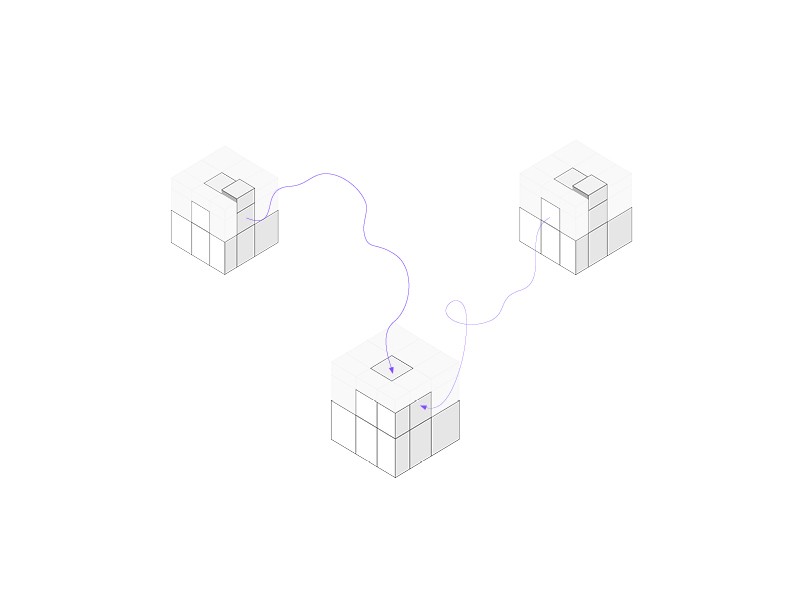 via Muk
via Muk
4. To solve the second layer corners, you?ll need a specific algorithm. There are two options:UP ? RIGHT ? UP REVERSE ? RIGHT REVERSE ? UP REVERSE ? FRONT REVERSE ? UP ? FRONTorUP REVERSE ? LEFT REVERSE ? UP ? LEFT ? UP ? FRONT ? UP REVERSE ? FRONT REVERSETry both and you?ll quickly figure out which one works for your solution.
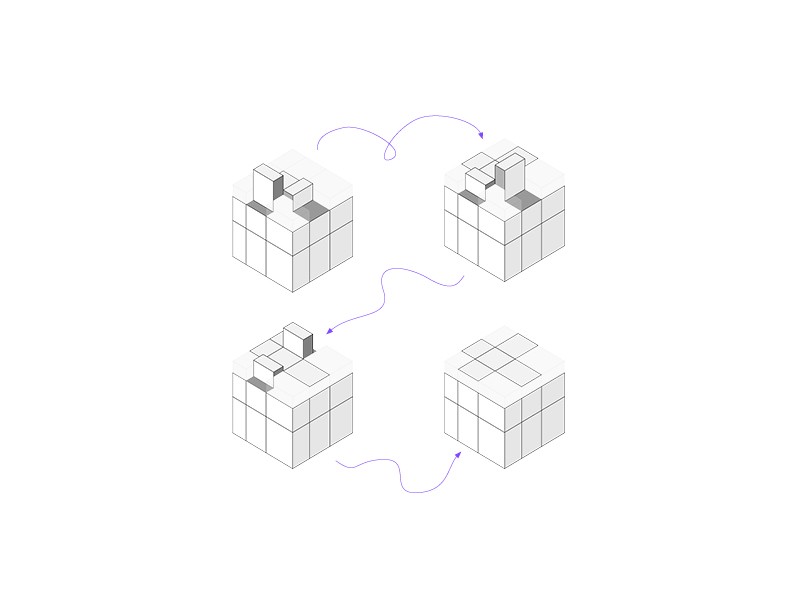 via Muk
via Muk
- Then move on to top cross. To swap two cross pieces diagonally, try this:RIGHT ? UP ? RIGHT REVERSE ? UP ? RIGHT ? UP ? UP ? RIGHT REVERSE ? UP ? UP
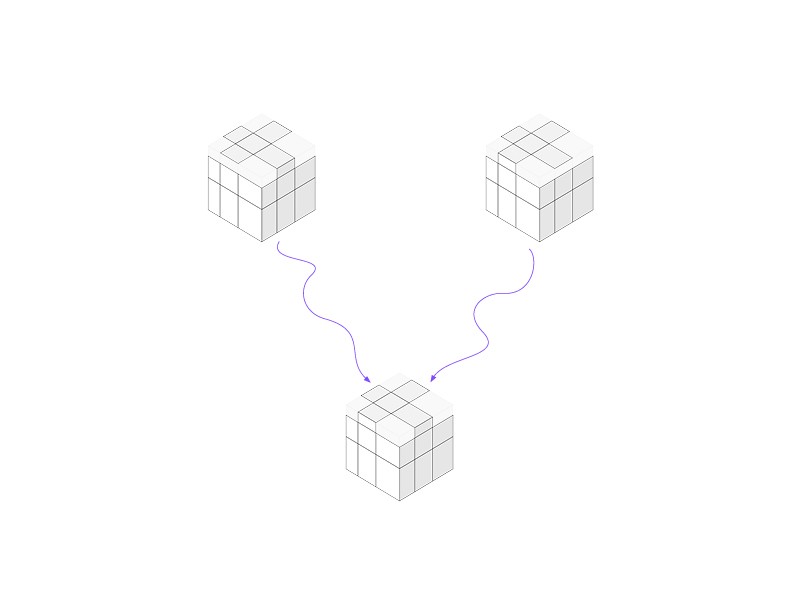 via Muk
via Muk
- Now you should be left with top corner pieces only. This is the trickiest step, so with the beginner?s method, it?s impossible to give one recipe that would work for every single combination. I?d advise you to play around before you scramble for a cheat sheet. If you can?t figure this last move, you can always find the exact solution for your specific configuration somewhere.
- And finally, orient the corner pieces of the top layer. Most people mess up their cube at this stage, so pay extra attention. The algorithm goes:RIGHT REVERSE ? DOWN REVERSE ? RIGHT ? DOWN
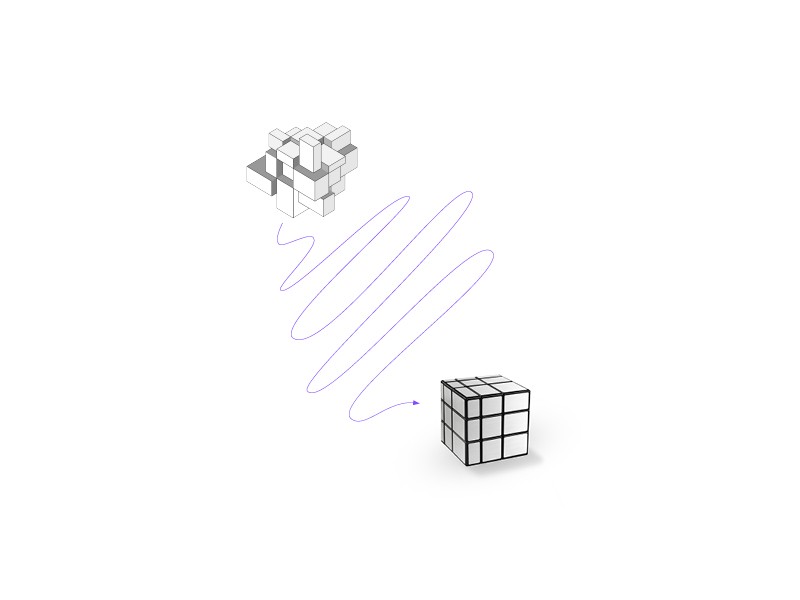 via Muk
via Muk
And some final points:
You need to practice A LOT to master the Mirror Cube, even if you?re familiar with the Rubik?s Cube. In the end, Mirror is a little harder the Rubik?s because you can only tell if pieces go together when you actually put them together. However, once you jump the learning curve, it?s more fun than the Rubik?s because it?s a much more tactile experience. If you?re still not so comfortable, I also would suggest you to spend some time with 2×2 puzzles, familiarise yourself with the algorithms and different methods, before you level up to the 3×3 Mirror Cube.
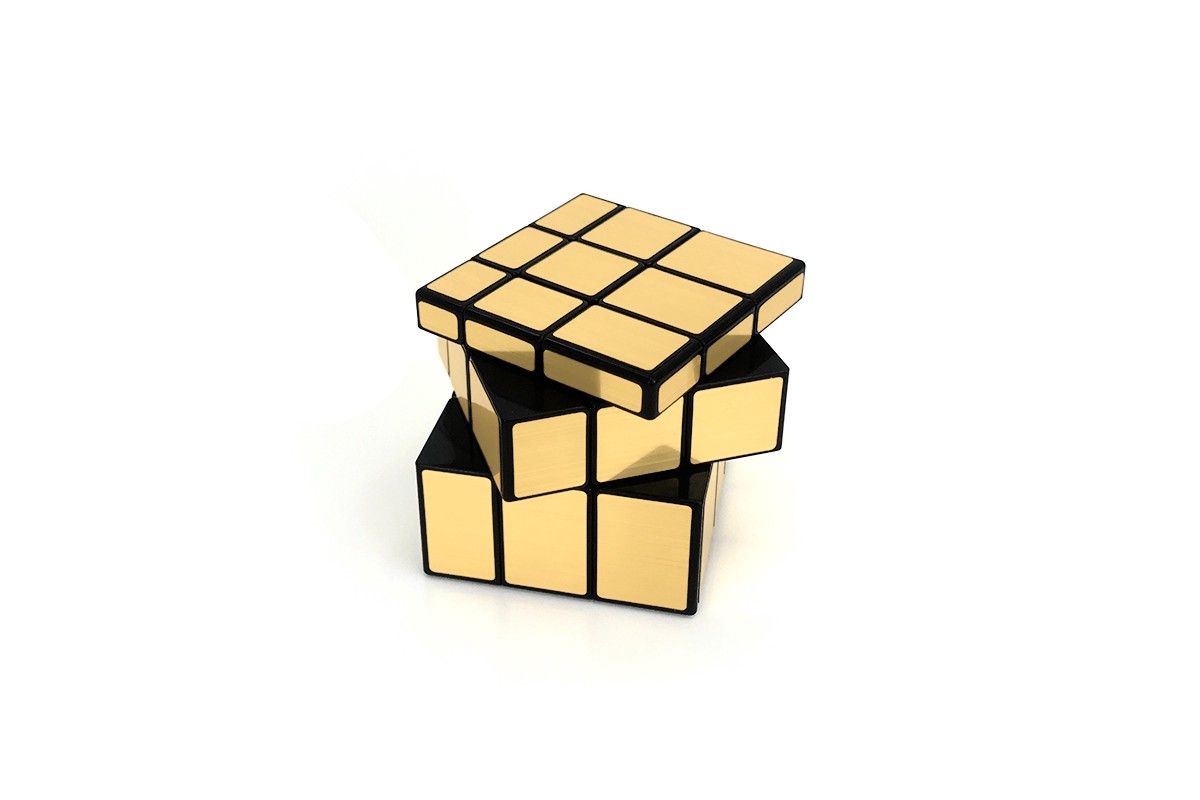
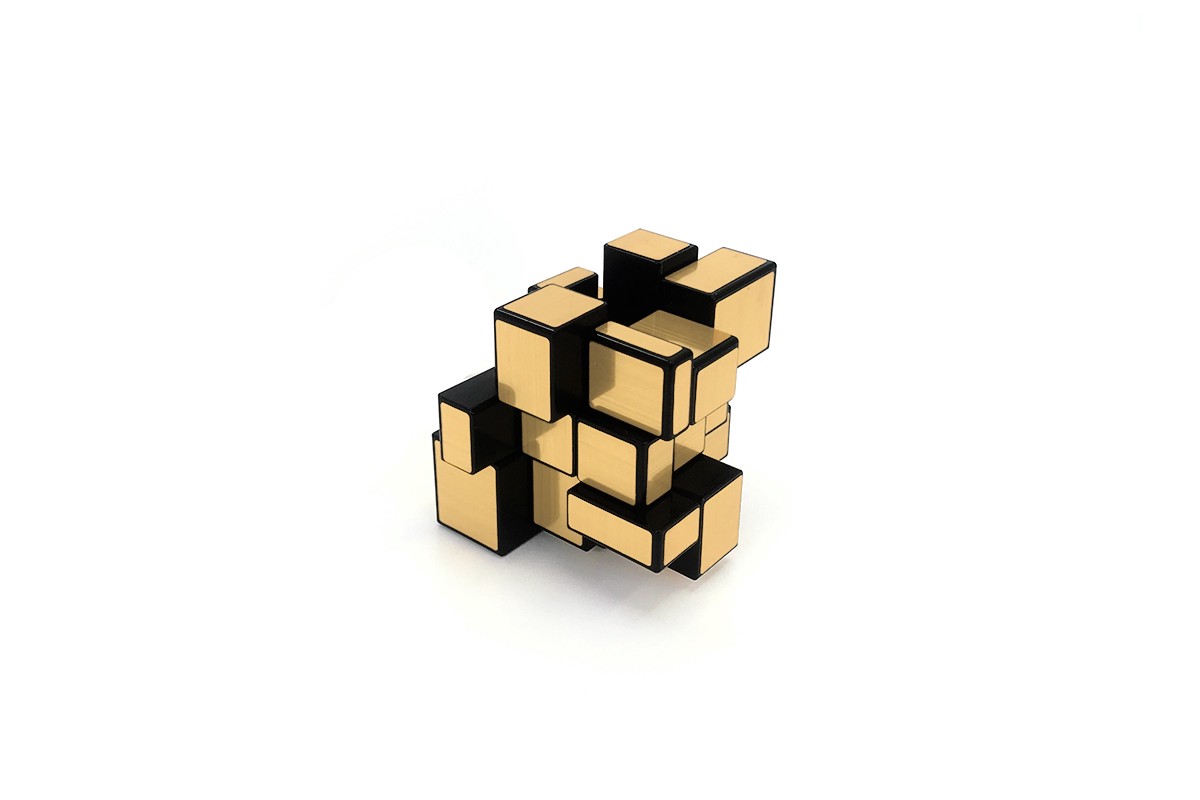
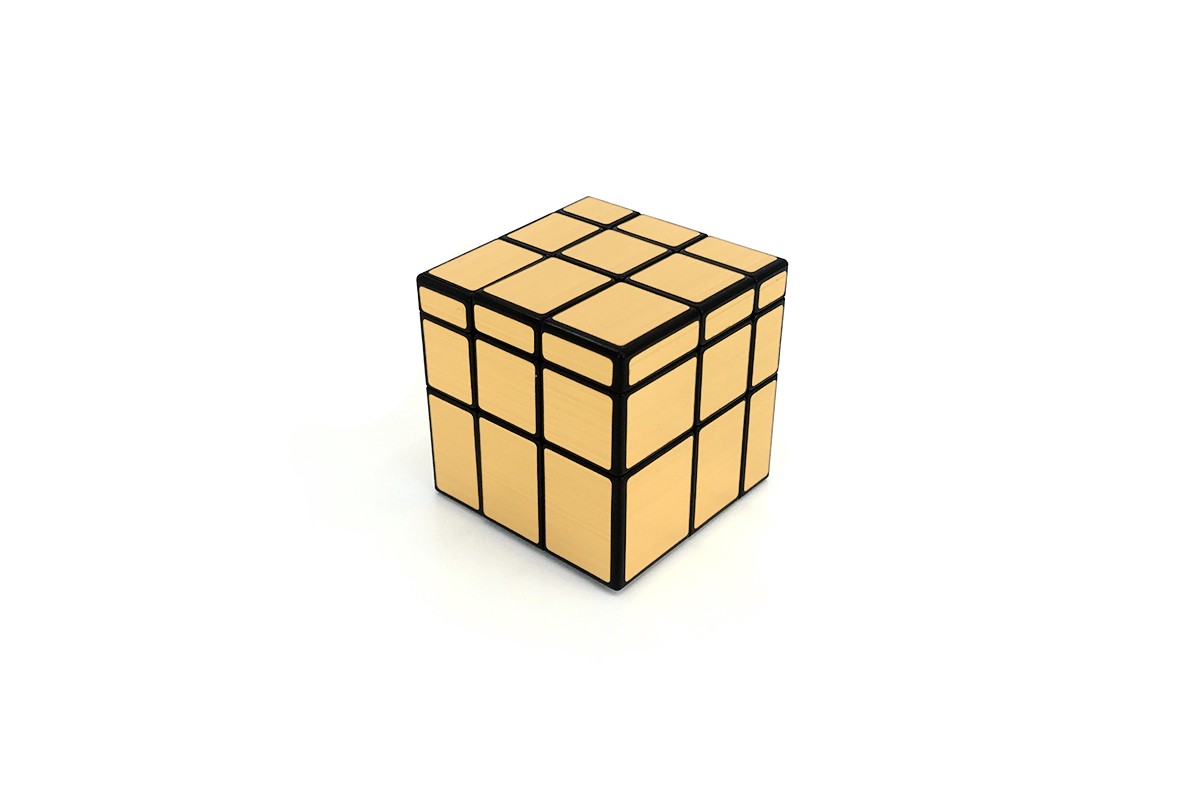
Bear in mind that, there are many other solutions for the Mirror Cube than this one, which is the beginner?s method. Feel free to explore other methods as well, which might resonate better with you. I?ve read that there are exactly 43,252,003,274,489,856,000 combinations existing, so why not add to those by inventing your own.
I?ve prepared a FREE Mirror Cube tutorial, which explains each step in more detail with illustrations. Hopefully this guide will be helpful to kick things off with your Mirror Cube. I had lots of fun making it, so hope you?ll find it helpful, too.
Also, if you don?t already have a Mirror Cube, you can grab one here.
Good luck and have fun!
